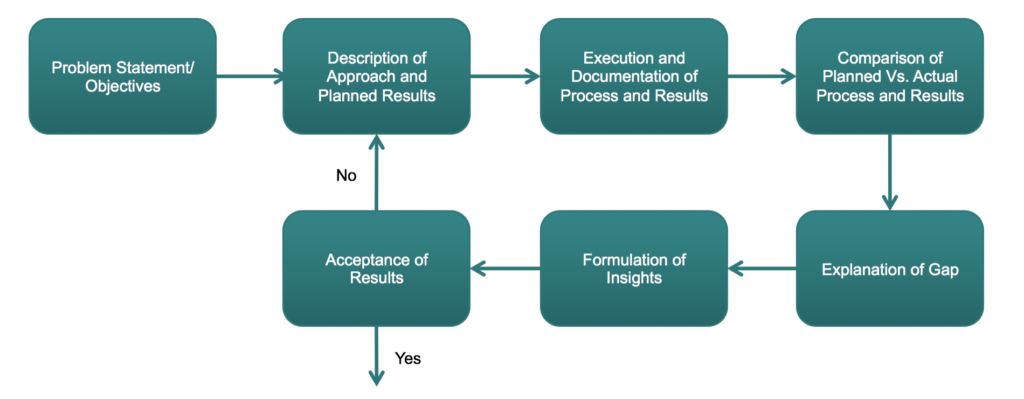The performance of the business depends on its ability to execute its strategy in light of various changes on the ground. Implementation control is one of several strategic controls at the disposal of the firm to help guide the execution of the strategy.
The objective of implementation control is to keep the strategy execution on track as planned, making sure that results are being delivered. It comprises three steps:
Step 1. Measuring. As the first step in strategic control, measuring enables managers to acquire the information needed to read the actual performance, and, therefore, determine what to do next. It is important to use metrics that allow a meaningful read of the situation. Some of these include the following:
- Market share
- Profit margin
- Revenue growth
- Return on investment, and
- Earnings per share, among others
While necessary, these measurements take time to show given a natural lag between cause and effect. In the meantime, managers need to be able to determine whether current efforts are producing the intended effect. Therefore, meaningful measurements need to detect a more immediate impact. As a result, management needs to adopt metrics that reflect various time horizons, including the long term, medium term, and short term.
Step 2. Comparing. This step helps to determine the deviation between actual versus planned performance to validate whether performance is within an acceptable range or needs to be corrected. This detection hinges on the feedback of the results of the actual performance. Four questions frame the concern at the heart of the issue:
- Is there a matching difference?
- How meaningful is the difference?
- If so, what explains the gap between actual versus planned results?
- What meaningful insights does this tell us?
Step 3. Taking corrective action. Ultimately, management needs to decide whether to accept results as they are, or take corrective action and change the course of development.
If corrective action is necessary, it should focus on the causes of the deviation. The insights developed in the previous step serve this purpose.
For the corrective action to work, it needs to address the cause of the deviation and address significant variables and objects. This step requires making an explicit description of the new approach and the expected results.
DESIGNING THE IMPLEMENTATION CONTROL SYSTEM
The fundamental formula of implementation control is to operate as a feedback system. Its design should incorporate the following principles for maximum effectiveness:
- The implementation control system should be limited to minimum requirements.
- It should focus only on essential activities and results that are key to strategy execution.
- It needs to reflect timing that is appropriate for the adoption of the corrective action, i.e., before the situation veers too far afield to steer back.
- It needs to monitor the consequences of strategy execution at distinct time horizons: long term, medium term, and short term.
- Finally, it should pay attention to the reward system used to achieve the desired performance.
Exhibit 1. Schematic View of an Implementation Control System

FUNDAMENTAL CONSIDERATIONS OF IMPLEMENTATION CONTROL SYSTEMS
The most critical role of the controlling function is in the evaluation of the effective strategy. As your company gets ready to design a system of implementation control, these considerations will help guide the effort:
- What activities are we tracking?
- Are we accommodating external change (e.g., new technologies, globalization, new competitors from emerging markets)?
- What variables are we controlling?
- What are the time frames for concern?
- What are the appropriate measures of control?
- What is the frequency of control?
- Is communication clear to build alignment?
- Does the control system promote a culture of performance or is it punitive?
- Is the system action oriented?
- Who is responsible for implementation control?
- Who is responsible for making managerial course corrections?
- Are implementation controls and the reward system aligned?
- How do we evaluate the effectiveness of the implementation control system?
- Will the implementation control system as designed ultimately serve to steer strategy execution?
It may take more than one cycle to get the control system right. The best companies rely on continuous improvement of the implementation control system. This practice helps to remove blind spots, bias, false starts, last-minute deviations, side projects, personal preference, or unrelated activities.

